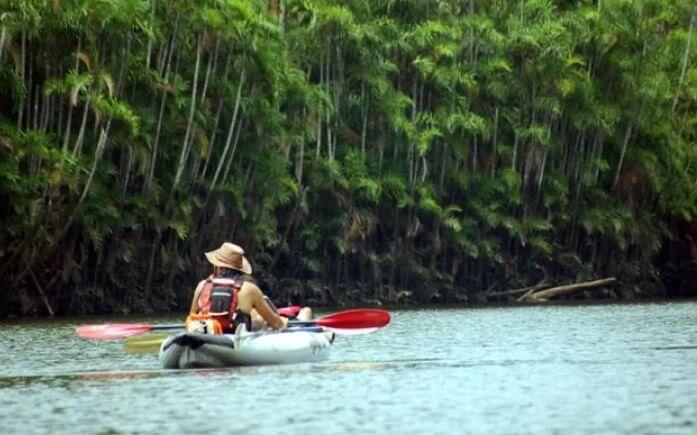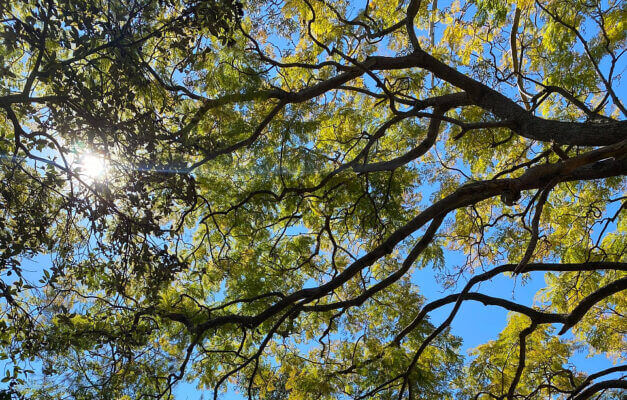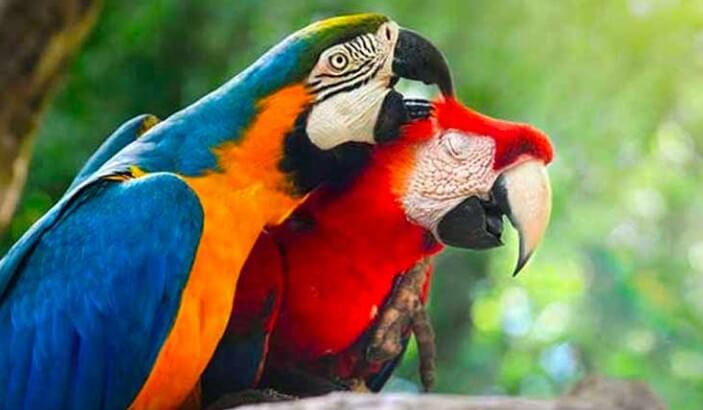The Amazon Rainforest, often referred to as the “lungs of the Earth,” is home to the largest river system on the planet – the Amazon River and its extensive network of tributaries. This awe-inspiring natural wonder stretches across the heart of South America, passing through various countries and nurturing a diverse ecosystem. In this article, we will delve into the magnificence of the Amazon River, its essential tributaries, and the captivating features that make it one of the most remarkable wonders of the world.
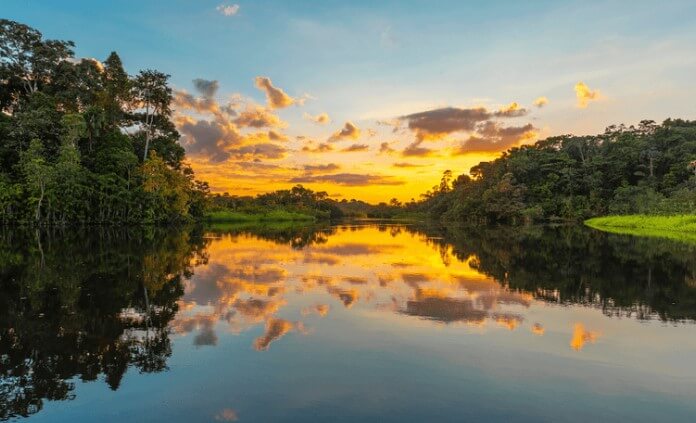
The Amazon River and its Tributaries
The Amazon River, often simply called the “Amazon,” is the second-longest river globally, after the Nile. It originates from the Andes Mountains in Peru and winds its way through several countries, including Peru, Colombia, and Brazil, before emptying into the Atlantic Ocean. With a staggering length of approximately 6,575 kilometers (4,086 miles), the Amazon River is a lifeline for the vast Amazon Rainforest.
A key aspect of the Amazon River’s grandeur lies in its extensive network of tributaries. These tributaries are smaller rivers and streams that flow into the main river, enriching it with fresh water and nutrients. They play a crucial role in sustaining the rainforest’s biodiversity and provide habitats for countless plant and animal species.
Rivers of the Amazon Rainforest
The Amazon Rainforest is blessed with numerous rivers, each adding its unique charm to this verdant wonderland. Some of the notable rivers include:
- The Rio Negro: This is the largest left tributary of the Amazon River and one of the world’s blackwater rivers. It gets its name from its dark color, a result of the organic materials it carries from the forest floor.
- The Rio Solimões: This is the name given to the upper stretches of the Amazon River in Brazil, where the Rio Negro and the Solimões River meet. It’s fascinating to witness the meeting of the waters, as the dark Rio Negro and the muddy Solimões flow side by side without immediately mixing.
- The Madeira River: As the main tributary of the Amazon River, the Madeira River is an essential route for transportation and commerce in the region.
Swimming in the Amazon River and Safety Considerations
Swimming in the Amazon River might seem like a thrilling idea, but it comes with inherent risks. The river is home to numerous aquatic creatures, some of which could pose a threat to humans. Piranhas, electric eels, and other dangerous species inhabit its waters. Additionally, strong currents and unpredictable weather patterns can make swimming perilous. It is always advisable to consult local guides and adhere to safety guidelines before attempting to swim in any part of the Amazon River.

Where is the Amazon River Located and in Which Direction Does It Flow?
The Amazon River primarily flows through South America, coursing through Brazil, Colombia, and Peru. It meanders eastwards before ultimately discharging into the Atlantic Ocean. The river’s vast basin covers an area of approximately 7 million square kilometers (2.7 million square miles), making it one of the largest drainage systems globally.
The Widest Part of the Amazon River
The widest part of the Amazon River can be found at its mouth, where it meets the Atlantic Ocean. At this point, the river’s width can span up to an astonishing 11 kilometers (7 miles) during the rainy season. The sheer magnitude of this river mouth is a sight to behold and showcases the immense power with which it flows into the ocean.
Major Rivers of Brazil and South America
- Apart from the Amazon River, South America boasts several other significant rivers. Some of these include:
- The Orinoco River: Flowing through Venezuela and Colombia, the Orinoco River is one of South America’s longest rivers.
- The Parana River: Stretching across Brazil, Paraguay, and Argentina, the Parana River is another prominent river in the region.
The Largest River in Latin America and Countries through which the Amazon River Flows
The Amazon River holds the title of being the largest river in Latin America and the entire world. It flows through various countries, including Peru, Colombia, and Brazil. Brazil, being the largest country in South America, is blessed with the lion’s share of the Amazon River and its tributaries.
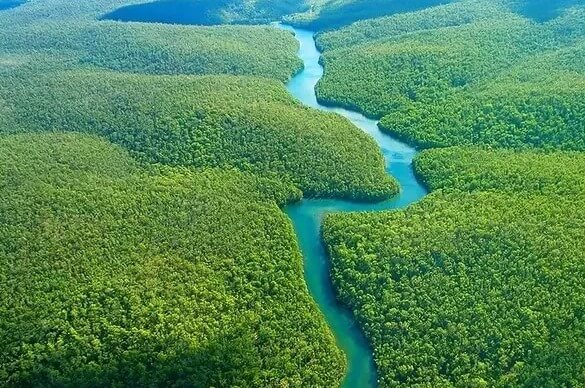
What Lies in the Amazon River
The Amazon River’s waters are teeming with life, ranging from tiny microorganisms to large, elusive creatures like the Amazon River Dolphin, also known as the pink river dolphin. The river also hosts a plethora of fish species, making it a vital source of sustenance for the local communities and contributing significantly to the global fish biodiversity.
Amazon River in South America: A True Giant
The Amazon River is undeniably the largest river in South America and holds the title of being the widest river in the world. Its colossal basin spans several countries, including Brazil, Bolivia, Colombia, Ecuador, Peru, and Venezuela, making it a lifeline for millions of people and a sanctuary for countless plant and animal species.
The Amazon River at Its Widest Point
The Amazon River’s width varies throughout its course, but it reaches its widest point near its mouth where it meets the Atlantic Ocean. Astonishingly, the river can extend up to 11 kilometers (approximately 7 miles) in width during the rainy season. This remarkable expanse is a testament to the river’s immense power and the vastness of its influence on the surrounding landscape.
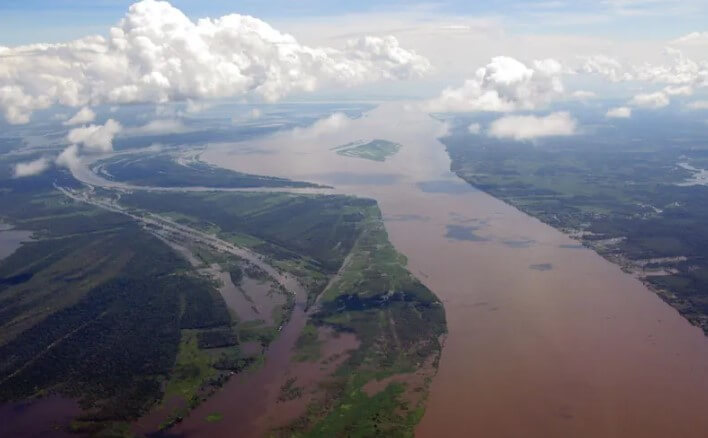
Headwaters of the Amazon: Where It All Begins
The origin of the Amazon River lies high in the Andes Mountains of Peru. The headwaters of the Amazon, known as the “Apurímac River,” are considered the most distant source. From this point, the river begins its extraordinary journey, gathering strength and volume as it cascades through the rainforest.
The Deepest Part of the Amazon River
Determining the exact depth of the Amazon River is a complex task due to its constantly changing water levels and shifting sandbars. However, in certain areas, the river can reach depths of over 100 meters (approximately 330 feet), making it a significant contributor to the world’s freshwater reserves.
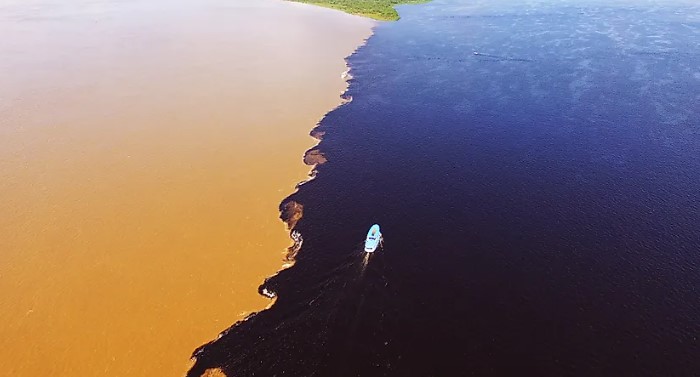
The Amazon River and the Amazon Rainforest
The Amazon River’s name is synonymous with the Amazon Rainforest, the world’s largest tropical rainforest covering approximately 5.5 million square kilometers (about 2.1 million square miles). The river and the rainforest are intimately connected, nurturing an unparalleled ecosystem that supports an astounding array of wildlife and plant species.
The Amazon River Delta
As the Amazon River nears its end and flows into the Atlantic Ocean, it forms a vast and intricate delta. The Amazon River Delta is an intricate network of river channels, islands, and wetlands, creating a unique and dynamic environment that teems with life.
The Longest River in South America
The Amazon River proudly bears the distinction of being the longest river in South America and the world. Its meandering course spans approximately 6,575 kilometers (about 4,086 miles), crossing diverse landscapes and nurturing one of the most biologically diverse regions on Earth.
Major Rivers in Colombia and Brazil
Colombia and Brazil, both blessed with abundant natural wonders, host significant rivers besides the Amazon. In Colombia, the Magdalena and Cauca Rivers play vital roles in shaping the landscape and supporting local communities. In Brazil, the Sao Francisco River stands as one of the longest rivers in the country, carving its way through the arid northeast.
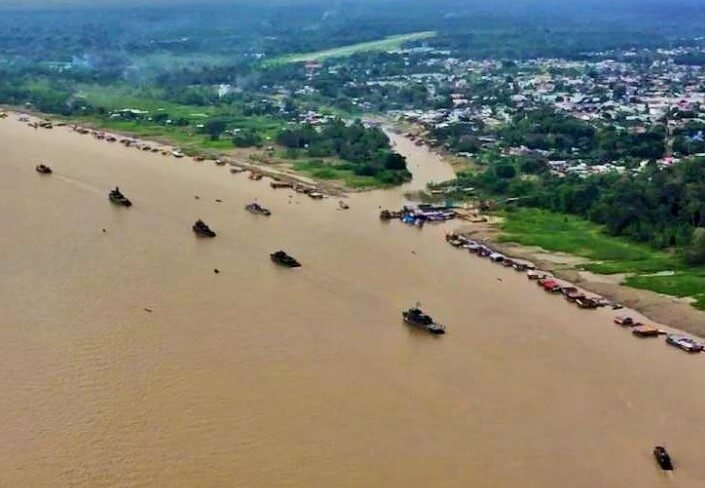
The Amazon River Basin
The Amazon River Basin is an expansive region encompassing the river and its countless tributaries. This vast area is crucial for regulating global climate patterns, and it is often referred to as the “lungs of the Earth” due to the immense amount of oxygen the rainforest produces.
Formation of Tributaries: Nature’s Network
Tributaries are smaller rivers that feed into larger ones like the Amazon. They are formed through various processes, including rainwater runoff, springs, and melting glaciers, all contributing to the river’s overall water volume.
Read more: What kind of plants and trees are in the Amazon rainforest?

